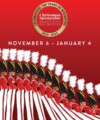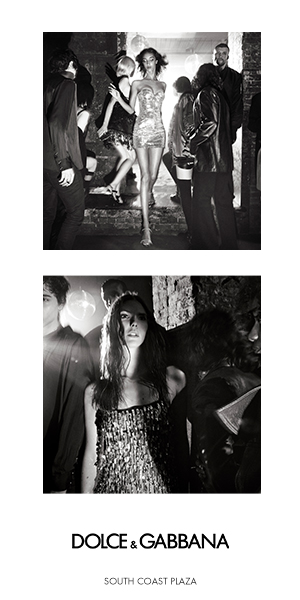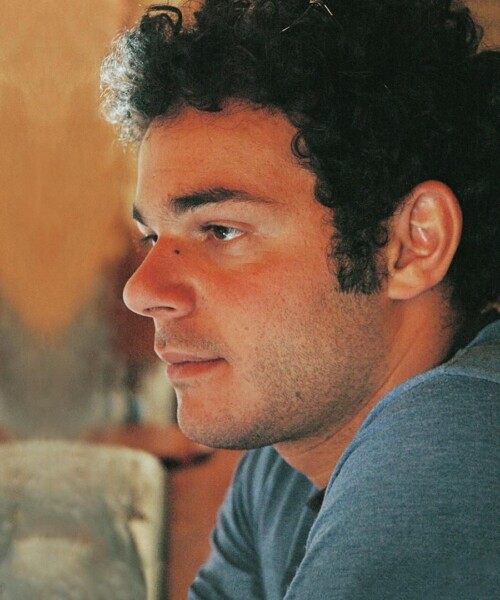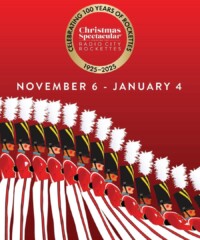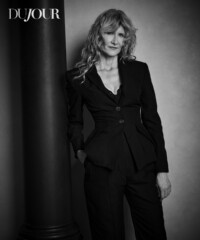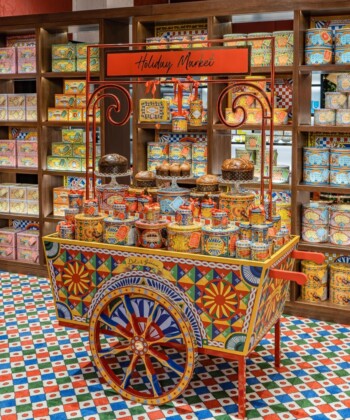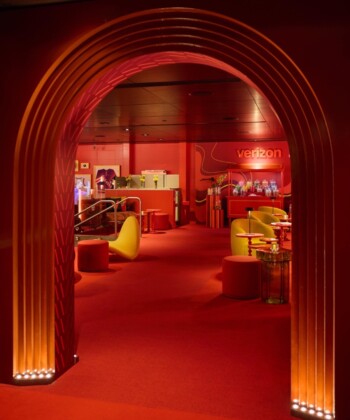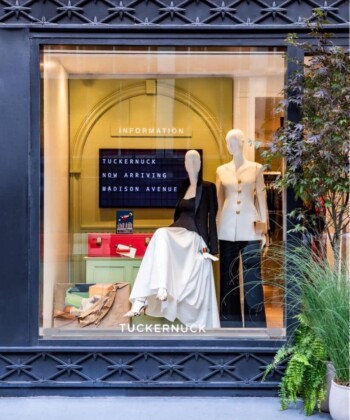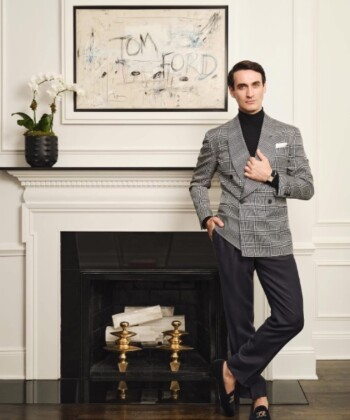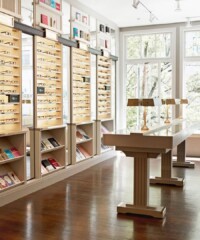 For his first solo show, Hush, at Lori Bookstein Fine Art, New York-based artist James Weingrod has taken on the biggest themes of them all: infinity and the universe. Visible from the street and on view 24/7, his kinetic installation—the inaugural exhibition of the gallery’s Open Window Project—actively engages passersby with a twirling birdcage and a series of two-way mirrors, creating an otherworldly environment where images are repeated ad infinitum within the eerie enclosure. Too abstract to imagine? Bookstein says, “James’ work is more conceptually focused, yet there are a myriad of ways—formally, conceptually, socially—to dissect it.” To get a more tangible handle on his vision, DuJour recently spoke with Weingrod about his creative process.
For his first solo show, Hush, at Lori Bookstein Fine Art, New York-based artist James Weingrod has taken on the biggest themes of them all: infinity and the universe. Visible from the street and on view 24/7, his kinetic installation—the inaugural exhibition of the gallery’s Open Window Project—actively engages passersby with a twirling birdcage and a series of two-way mirrors, creating an otherworldly environment where images are repeated ad infinitum within the eerie enclosure. Too abstract to imagine? Bookstein says, “James’ work is more conceptually focused, yet there are a myriad of ways—formally, conceptually, socially—to dissect it.” To get a more tangible handle on his vision, DuJour recently spoke with Weingrod about his creative process.
Tell us about this work. For starters, why is it called Hush?
It’s a name I got after re-reading Goodnight Moon, one of my childhood favorites. The book resonates with me when I think back to my childhood. I was a little insomniac, and my father attempted to remedy that by reading me his books about the universe and evolution in hopes they’d bore me to sleep. Instead, I’d ask a million “why?” questions. Usually, this ended with my mother coming in, [and] in the end, the only thing that worked was the two of them telling me to “Hush” and to wonder myself to sleep.
The bulk of Hush is the sculptural portion, composed of an antique Chinese birdcage painted with enamel that changes color in relation to the viewer’s position and lined with star-patterned rice paper. A light board, motor and timing devices keep it in constant motion. Hush relies on the circular form of the cage and the repetitive pattern of stars on the paper to create the illusion that these stars are twinkling and spinning inside the cage. Essentially, the viewer is presented with an installation of a sculpture acting as a self-contained filmic device, spinning in a glowing hall of mirrors.
How did you end up showcasing your work at Lori Bookstein’s gallery?
I first met Lori at an Open Studios event in 2008 when I was in the MFA program at Hunter College. At the time, I was working with laser-cut Plexiglas and making sculptural wall drawings with it. She took an interest in one of the installations, and later that year I had the opportunity to exhibit it in a group show, Big Drawing, at her old space on 57th Street.
After she moved to her new space on 10th Avenue, she approached me about an idea she had. The space has a picture window, and she told me she was thinking about using it to show the work of emerging artists called the Open Window Project, and offered me the opportunity to be the inaugural exhibition. Of course, I agreed.
How and where did you create this piece?
I fabricated the entire cage portion in my studio in Ridgewood, Queens. All of the other elements—the motor, motor housing, light board and timers—I either bought or had fabricated. I also used a window tinting company to help me select and apply the proper mirror films to the exterior glass.
The first, most time-consuming part was the making of the star paper. I chose rice paper because [it’s] traditionally used in lantern making but mostly because of its ability to glow. Next, I had to deal with sanding, priming and painting the cage, which was done with an airbrush to get a super-smooth finish. The paint is one I created myself using a mixture of pure pigments, including a color transfer pigment, mixed with an acrylic urethane. The resulting “color” is actually a range of colors from purple to green that shift in relation to your angle to it. The final step was applying the paper to the cage. I cut up the star paper into strips just wide enough to wrap slightly around a single set of vertical bars on the cage and long enough to span the spaces between the horizontal rings of the cage. Since there are 210 spaces that needed to be papered, this took a fair amount of time.
What inspired you to work with a birdcage?
Hush is an elaboration on an earlier sculpture I created, The Birdcage Universe—a [similar but] larger birdcage that spun in the middle of a darkened gallery space. I also had a later incarnation in an old elevator shaft in the Maxon Mills Gallery at The Wassaic Project. After creating and exhibiting it, I started thinking about how the piece might function if it were displayed somewhere the public might not expect to find it, like a storefront. So when Lori approached me, I knew almost immediately what I wanted to do.
How does your work change from day to night?
As with the real stars, when the sun rises in the morning and rays flood the sky, it’s so bright that the stars can’t be seen. In the daytime, Hush is so faint, so hushed by the sun that only the most observant passerby will know it is there at all, but as the sun goes down, night settles in, and the lights go down, Hush, like the real stars, comes alive.
I think this time-based visibility mirrors our relationship with our universe. Sometimes when we gaze up at the stars and try to take it all in, everything seems crystal clear and we feel a deep understanding of what surrounds us. But in other instances we are at a loss; the confusion of it boggles our small human minds and we are humbled, awed.
What sparks your creativity?
Sometimes a part of a book, article or essay will trigger an idea. Sometimes the work of my friends and colleagues inspires me. The important part is having the ideas, then I begin thinking about what medium or media I would like to explore the idea with.
What’s next for you?
I work in wide variety of media. Hush itself has elements of painting, sculpture, installation and even video. I think for an artist who’s chosen to work around the subject of the universe, an ever vast, expanding, unending and only partially understood entity, it’s only fitting to use any and all media at my disposal to try and conquer such a complex concept. I work on multiple pieces at once, so it’s hard for me to say, “Next I’ll be making a sculpture of this.” But I can tell you that I am working on a few paintings and a video, and I have a solo show at Napoleon Gallery in Philadelphia scheduled to open this September.
Hush is on view through July 27.


